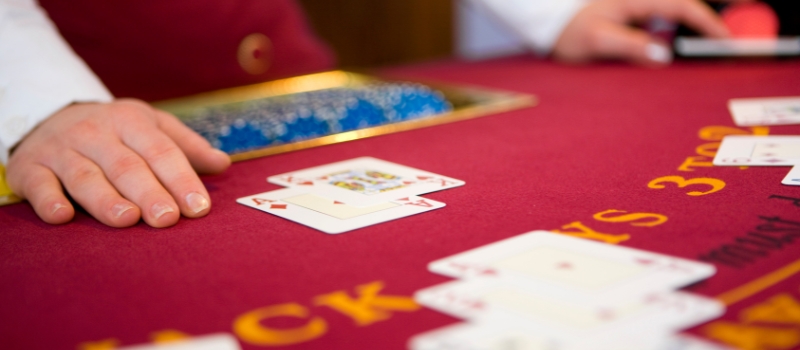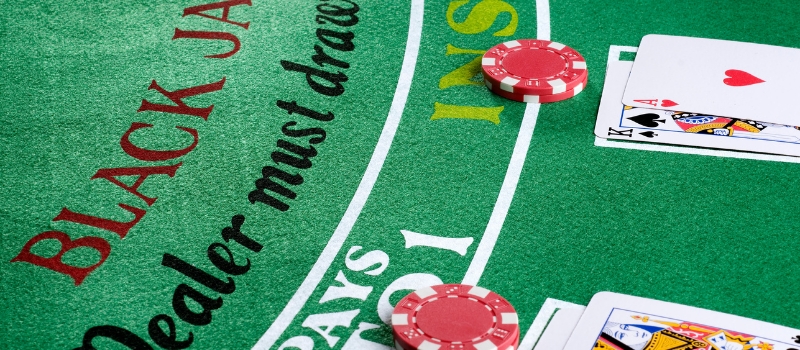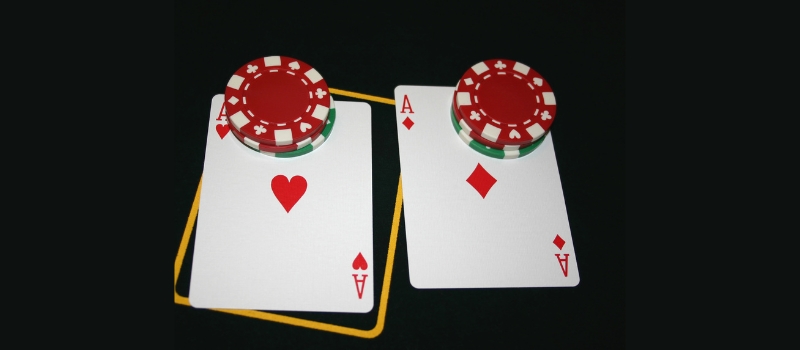Splitting Aces in Blackjack: Tips, Rules, and Strategies
Splitting Aces in blackjack is one of those strategies that can really make a difference, and I’ve seen it work wonders over time. When you split Aces, you get a chance to turn each Ace into two powerful hands, especially since an Ace paired with a 10 or face card (like a King, Queen, or Jack) could give you a strong 21. This move can be exciting and adds more chances for you to win.
However, I’ve learned that not every casino makes it easy. Some places limit your ability to draw extra cards after you split, or they might not let you re-split if you get another Ace. These rules can lower the impact of the strategy, so it’s always good to know the house rules before you play.
While splitting Aces in Blackjack has great potential, it’s not a sure thing. I’ve experienced the downside, too - if you don’t draw a high card, you could end up with two weaker hands that can lose to the dealer.
Through my own experience, I’ll walk you through how to use this Ace-splitting strategy effectively, point out the key rules you need to know, and help you manage any risks to get the most out of this move in every game.

Rules for Splitting Aces in Blackjack
Splitting Aces in Blackjack is a popular strategy in blackjack that can help you create stronger hands. However, specific rules for splitting Aces can vary between casinos and different game versions. Here’s a breakdown of the essential rules and variations so you can play smart.
Basic Rules
In most casinos, both online and live, there are a few basic rules when it comes to splitting Aces. Here’s a quick guide to the basic rules for splitting Aces in Blackjack:
- You can only split if you’re dealt two Aces in your first hand.
- Once you split, each hand will receive only one extra card.
- You can’t draw further cards even if your total is low.
- A split hand with Aces won’t count as a natural blackjack, even if it reaches 21.
- You’re not allowed to re-split if you draw another Ace.
- You’ll need to add another bet for each hand you split.
In summary, these are the basic rules for splitting Aces in Blackjack that you need to know to avoid breaking the rules or making simple mistakes in your game.
Ace Splitting Rules by Blackjack Variant
The rules for splitting Aces in Blackjack can vary depending on the blackjack version you’re playing. Here’s how it works in different games:
Vegas Strip Blackjack:
In Vegas Strip Blackjack, you can only split Aces once. Each Ace gets only one extra card, and you can’t draw more after that. Even if your total reaches 21, it won’t count as a natural Blackjack. This rule makes things a bit different, so it’s good to keep it in mind while playing.
Spanish 21:
In Spanish 21, you’ll find more flexibility with splitting and drawing after a split, which can make the game feel more favorable for players. However, the rules for splitting Aces can vary. Some casinos may limit resplitting to keep their advantage. So, it’s always a good idea to check the specific rules at each casino to get the most out of your game.
European Blackjack:
In European Blackjack, the rules for Aces are a bit stricter. You can usually only split Aces once, and you won’t be able to draw any extra cards beyond the one card that’s dealt to each Ace. This setup makes the game a bit more conservative, giving you fewer chances to build strong hands from split Aces.
Atlantic City Blackjack:
In Atlantic City Blackjack, you’ll have more flexibility with Aces, as you’re allowed to split them multiple times. This gives you better chances to create strong hands. However, the exact number of splits allowed can vary by casino, so it’s a good idea to double-check the specific rules before you start playing.
Note: It’s important to check each casino’s specific rules before playing. Many casinos adjust splitting and resplitting rules to balance the house advantage.

Doubling Down After Splitting Aces Rules
Doubling down after splitting Aces rules (DDAS) is a well-known rule when splitting Aces in Blackjack. Here are some key features of this rule that you might already know:
- Double down after splitting Aces allows you to double your bet on each new hand created from a split.
- The rule applies not only to Aces but also to other strong pairs, like 8s.
- This hep you maximize your winning potential if the first card drawn on each split hand is strong.
- Not all versions of Blackjack or casinos offer DDAS, so it’s important to check the rules beforehand.
The doubling down after splitting aces rule refers to whether a player can double their bet after splitting a pair of Aces. When this rule is allowed, it gives you the chance to double your bet on each split Ace hand if you like the card you drew. This can be a powerful option, as it increases your potential winnings if the hand is strong.
Some blackjack versions don’t allow Double Down after you split Aces, as Aces are strong cards that already give players an edge. But in versions like Atlantic City Blackjack, you’re allowed to Double Down after splitting, which can boost your odds if you draw a strong card like a 10.
Each casino has its own rules here too, so it’s important to check in advance. This way, you can avoid surprises and use the best strategy when it matters most.
Important Notes on Splitting Aces in Blackjack
From my experience, there are specific rules and common mistakes to be aware of if you want to get the best out of this strategy. Here are some key things to remember when you’re deciding whether to split Aces.

1 - You should always split aces when you get the chance
Splitting aces in blackjack gives you a unique advantage because each Ace can count as 11 points or 1 point. When you split, you’re increasing your chances of drawing a 10 or a face card, which can lead to the ideal hand of 21. This move can make a huge difference, giving you two strong hands instead of just one.
2 - Check if DAS (Double After Split) is allowed
Some casinos let you Double Down after splitting Aces (DDAS), which allows you to increase your bet on a promising hand. For example, if you split your Aces and draw a 9 or 10 on one of them, doubling down could help you maximize your potential win. This rule can make a real difference, so I always recommend checking if DDAS is allowed at your table - it could be the extra edge you need!
3 - You’ll often be limited to one card after splitting aces
Most casinos only allow you to draw only one extra card for each split Ace. This can make a difference because if you don’t draw a high card, you’re stuck with a lower total and no way to improve it. From my experience, it’s good to remember that this rule limits your chances, so be mindful when deciding to split Aces.
4 - A 21 after splitting aces isn’t a natural blackjack
If you reach 21 (An Ace card with a face card) after splitting Aces, it won’t count as a natural blackjack (normally pays 3:2). Instead, it’s considered a regular 21, with a payout of only 1:1. This can impact your winnings, so it’s something to keep in mind when deciding to split.
5 - Manage your bankroll carefully
When splitting Aces in Blackjack, it’s smart to set a personal limit for extra bets so you don’t overspend. Only go for the split if the table rules work in your favor, like allowing you to double down after splitting. By keeping a clear cap in mind, you stay in control and make the most of your budget without stretching it too thin.
Common Mistakes When Splitting Aces
Splitting Aces is a strong move, but there are a few common mistakes that can reduce its impact. Here’s what you and I should keep in mind to make the most of this strategy.

1 - Not splitting aces when you can
If you skip the chance to split Aces, you lower your odds of creating two strong hands. In fact, many players hesitate to split Aces due to the extra bet required. But by not doing this, you miss out on the chance to turn a single hand with an Ace into two high-value hands, each with reaching or close to 21. This significantly increases your chances of winning more money.
2 - Ignoring DAS (Double After Split) rules
Some casinos don’t allow doubling down after splitting Aces in Blackjack, which limits your chance to boost winnings on strong hands. So, you need to check for DAS beforehand. This ensures that you don’t miss potential gains if DAS is allowed. Hence, you can double your bet on each split Ace for a higher payoff when the drawn card is favorable.
3 - Thinking splitting aces guarantees a win
If you split aces in blackjack, you’ll raise your chances. But it doesn’t guarantee a win since you only get one extra card per hand. In the case of drawing low cards, both hands could end up weak, so you try to remember that it’s just an advantage, not a sure win.
FAQs
Are there any limitations to splitting Aces in Blackjack?
Yes, most casinos limit players to only one additional card per split Ace, and often don’t allow further splits if another Ace is drawn.
How many times can you split Aces in Blackjack?
Typically, players can only split Aces once, though some casino rules may allow additional splits. It’s best to check the specific table rules.
How should you play when splitting Aces in Blackjack?
The main goal is to maximize your chances of getting a 10 or face card with each Ace, creating strong hands close to 21. Following table rules on Double After Split (DAS) can also enhance your strategy.
Why is splitting Aces sometimes frowned upon in Blackjack?
Splitting Aces can be risky, especially since you only get one extra card per Ace. Without a high card, your hands may remain weak, and you can lose both bets.
In short, knowing the rules and limits of splitting Aces in Blackjack can really help you play smarter. When you understand these points, you avoid common mistakes and get the most out of this strategy.
From my experience, splitting Aces in Blackjack isn’t always the best move in every game. Sometimes, it’s better to hold back, stay patient, and keep your options open. This way, you’re in control and can make choices that suit the situation best.
















